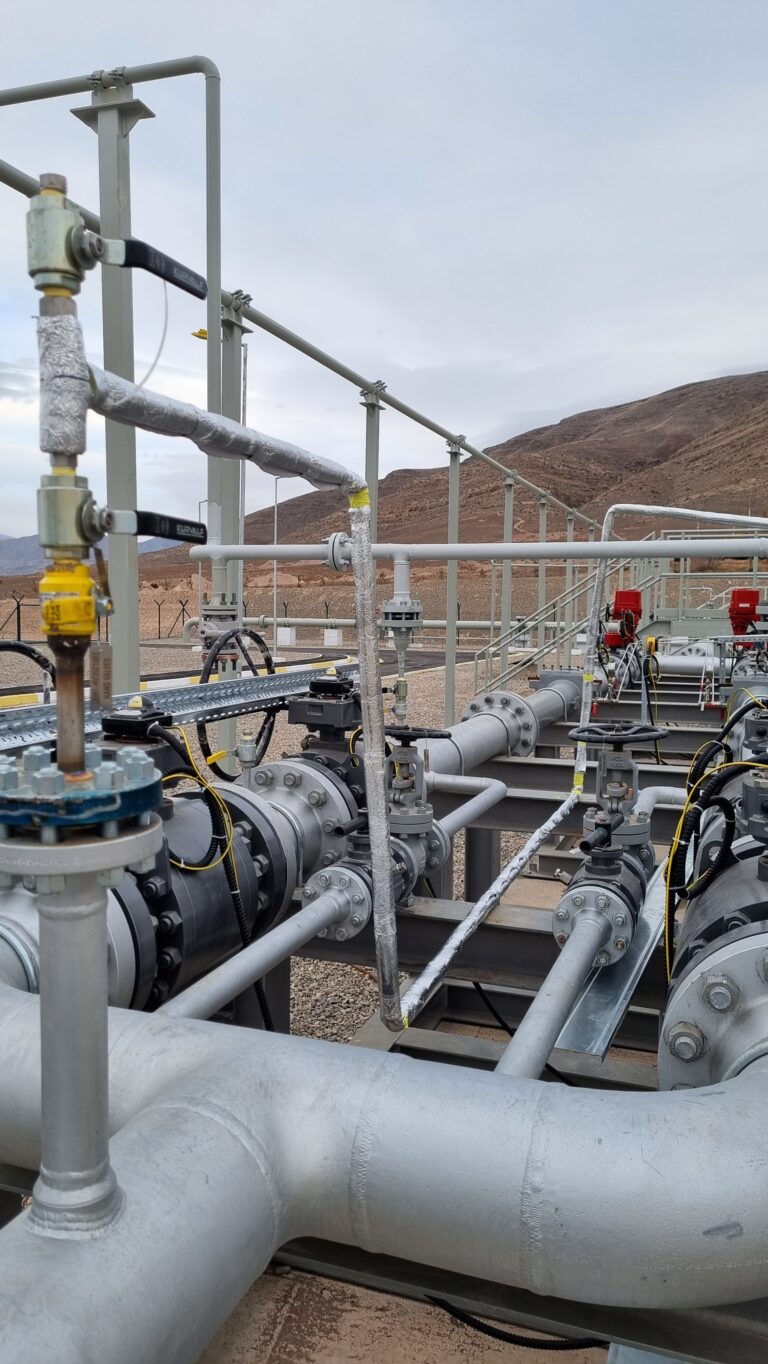What is HVAC? How Does the HVAC System Work?
HVAC stands for “Heating, Ventilation, and Air Conditioning,” representing systems designed to control the indoor climate by regulating temperature, humidity,...
Devamını Oku

PLC programming refers to the process of creating and implementing instructions for Programmable Logic Controllers (PLCs), enabling them to control and automate industrial machinery and processes. PLCs serve as the brain of automation systems, bridging the gap between sensors, actuators, and human operators to execute tasks with precision and efficiency.
A PLC program defines how the system responds to specific inputs, such as temperature changes or pressure variations, by issuing appropriate outputs like activating motors or adjusting valves. Widely used in industrial automation, PLC programming ensures seamless and reliable operation of systems across manufacturing, energy, and logistics sectors.
Understanding what PLC is, its programming methods, and its applications provides valuable insights into its vital role in modern industry. As industries increasingly adopt automation, PLC programming stands out as a critical skill for optimizing productivity, reducing errors, and enhancing operational efficiency.

plc-programming-languages
PLC programming is the process of developing a set of instructions for a Programmable Logic Controller (PLC) to automate machinery and industrial processes. A PLC is a specialized computer designed to handle complex operations in industrial environments, offering reliability, flexibility, and real-time control.
PLC programming involves using PLC programming languages like Ladder Logic or Structured Text to define how the system reacts to inputs, such as sensor data, and executes outputs, like motor control. These programs are designed to manage tasks ranging from simple operations like turning lights on and off to complex multi-step processes in automated production lines.
PLC stands for Programmable Logic Controller, which highlights its primary function: to provide programmable and logical control over various devices and systems. Unlike traditional hard-wired control systems, PLCs offer flexibility and can be reprogrammed to adapt to changing operational needs, making them a cornerstone of modern automation.
A PLC (Programmable Logic Controller) acts as the central control unit in automation systems, managing and executing various tasks to ensure efficient and precise operations. It continuously monitors inputs from devices like sensors and makes decisions based on programmed logic to control outputs such as motors, actuators, or alarms.
PLCs are designed to handle repetitive and complex processes with high reliability. For example:
Their ability to operate in real-time ensures that processes run smoothly without delays or errors. By converting raw input data into actionable commands, PLCs play a crucial role in automating industries and enhancing productivity.
PLC programming involves creating and implementing a logic-based program that directs how a Programmable Logic Controller interacts with inputs and outputs to control processes. The process is systematic and includes several key steps to ensure accurate and efficient operations.
The programming process is supported by user-friendly tools like PLC screen programming, which provides graphical interfaces for easier development and monitoring. This structured approach ensures that automation systems are reliable, scalable, and adaptable to evolving needs.
PLC programming is utilized across a diverse range of industries, enabling automation, control, and optimization of processes. Its versatility and reliability make it an essential tool in sectors where precision and efficiency are paramount. Some common applications include:
By integrating PLC programming into various industries, businesses achieve enhanced productivity, cost efficiency, and adaptability in their operations.
PLC programming languages are specialized tools used to write instructions that guide a Programmable Logic Controller (PLC) in performing tasks. These languages are standardized under IEC 61131-3, which defines the five primary languages for PLC programming.
Ladder Diagram (LD):
Function Block Diagram (FBD):
Structured Text (ST):
Sequential Function Chart (SFC):
Instruction List (IL):
PLC programming offers numerous benefits, making it an indispensable tool in modern automation and industrial control systems. Its adaptability and reliability contribute to improved efficiency and streamlined processes. Here are the key advantages:
By leveraging these advantages, businesses across various sectors achieve higher productivity, improved quality, and reduced operational costs.
In modern industries, automation with PLCs has become a cornerstone for optimizing efficiency, precision, and scalability. PLCs serve as the central control units in automation systems, managing machinery, monitoring processes, and ensuring seamless operations.
For example, in industrial automation, PLCs are used to synchronize robotic arms on production lines, ensuring accuracy and efficiency. Similarly, in the food industry, PLCs automate tasks like sorting, packaging, and quality control, enhancing productivity while maintaining safety standards.
As industries continue to adopt advanced technologies, PLCs remain integral to achieving higher levels of automation and competitiveness in global markets.
Adatech offers innovative and customized PLC programming solutions tailored to meet the specific needs of industries. With a focus on precision, scalability, and advanced technology, Adatech’s PLC services ensure seamless integration into existing systems and maximum operational efficiency.
Adatech’s expertise in automation ensures that businesses benefit from robust and reliable systems that enhance productivity, reduce costs, and drive innovation.
Here are answers to common questions about PLC programming, its applications, and its advantages in automation systems:
Popular PLC programming software includes Siemens TIA Portal, Rockwell Automation’s Studio 5000, and Mitsubishi GX Works. These tools support various PLC programming languages like Ladder Logic and Structured Text, providing advanced features for development and diagnostics.
Developing automation systems with PLC involves:
PLCs are used in numerous sectors, including:

HVAC stands for “Heating, Ventilation, and Air Conditioning,” representing systems designed to control the indoor climate by regulating temperature, humidity,...
Devamını Oku
Heat tracing is a heating method used in industrial and commercial areas to prevent pipes, tanks, and other surfaces from...
Devamını Oku
Lightning is a natural phenomenon that poses serious risks to buildings, electrical systems, and human safety. A single lightning strike...
Devamını OkuPROTECTION OF PERSONAL DATA
WEBSITE COOKIE POLICY
Your personal data; It is one of the leading principles of our Organization to protect the privacy of visitors to the website (www.adatech.com.tr) operated by ADATECH as the data controller. This Cookie Usage Policy (“Policy”) explains to all our website visitors and users which types of cookies are used and under what conditions.
Cookies are small text files stored on your device or network server by websites you visit on your computer or mobile device.
They are generally used to provide you with a personalized experience during your use of the website you visit, to improve the services offered and to improve your experience, and may contribute to ease of use while browsing a website. If you do not prefer the use of Cookies, you can delete or block Cookies in your browser settings. However, we would like to remind you that this may affect your use of our website. Unless you change your cookie settings in your browser, we will assume that you accept the use of cookies on this website.
1. WHAT KIND OF DATA IS PROCESSED IN COOKIES?
Cookies on websites, depending on their type, collect data about your browsing and usage preferences on the device you visit the site. This data includes information about the pages you access, the services and products you review, your preferred language option and other preferences.
2. WHAT is a solution and what are its intended uses?
Cookies are small text files that are stored on your device or network server through browsers by websites you visit. These small text files, which contain your preferred language and other settings on the site, help us remember your preferences the next time you visit the site and make improvements to our services to improve your experience on the site. Thus, you can have a better and personalized usage experience on your next visit.
The main purposes of using cookies on our Website are listed below:
3.TYPES OF COOKIES USED ON OUR WEBSITE
3.1. Oturum Çerezleri
Session cookies ensure that the website functions properly during your visit. They are used for purposes such as ensuring the security and continuity of our sites and you during your visit. Session cookies are temporary cookies, they are deleted when you close your browser and come to our site again, they are not permanent.
3.2. Persistent Cookies
These types of cookies are used to remember your preferences and are stored on your device via browsers. Persistent cookies remain stored even after you close your browser or restart your computer from which you visited our site. These cookies are kept in subfolders of your browser until they are deleted through your browser’s settings.
Some types of persistent cookies may be used to provide you with special suggestions, taking into account issues such as your purpose of using the Website.
Thanks to persistent cookies, if you visit our Website again with the same device, it is checked whether there is a cookie created by our Website on your device and if there is, it is understood that you have visited the site before and the content to be transmitted to you is determined accordingly and thus a better service is provided to you.
3.3. Mandatory/Technical Cookies
These cookies are essential for the website you visit to function properly. The purpose of such cookies is to provide necessary services by enabling the website to function. For example, it allows you to access secure parts of the website, to use its features, to navigate on it.
3.4. Analytical Cookies
They collect information about the way the website is used, the frequency and number of visits, and show how visitors navigate to the site. The purpose of using such cookies is to increase performance by improving the way the site functions and to determine the general trend direction. They do not contain data that could enable the identification of visitors. For example, they show the number of error messages displayed or the most visited pages.
3.5. Functional/Functional Cookies
It saves the choices made by the visitor within the site and remembers them on the next visit. The purpose of such cookies is to provide ease of use to visitors. For example, it prevents the site user from re-entering the user password on each page they visit.
3.6. Targeting/Advertising Cookies
They enable the measurement of the effectiveness of advertisements served to visitors and the calculation of the number of times the advertisements are viewed. The purpose of such cookies is to serve ads customized to the interests of visitors.
Likewise, they enable the detection of visitors’ interests specific to their browsing and the presentation of appropriate content. For example, it prevents the advertisement shown to the visitor from being shown again in a short time.
4. HOW TO MANAGE COOKIE PREFERENCES?
To change your preferences regarding the use of cookies or to block or delete cookies, simply change your browser settings.
Many browsers give you the option to accept or reject cookies, accept only certain types of cookies, or be alerted by the browser when a website requests to store cookies on your device so that you can control cookies.
It is also possible to delete cookies previously saved in your browser.
If you disable or refuse cookies, you may need to set some preferences manually, some features and services on the website may not function properly as we will not be able to recognize and associate your account. You can change the settings of your browser by clicking on the relevant link from the table below.
5. ENFORCEMENT OF WEBSITE PRIVACY POLICY
Website Privacy Policy …./…./…./…. . is dated. In case all or certain articles of the Policy are renewed, the effective date of the Policy will be updated. The Privacy Policy is published on the website of the Authority (www.adatech.com.tr) and made available to the relevant persons upon the request of the personal data owners.
ADATECH
Address: Esenyalı Neighborhood Yanyol Street Varyap Plaza No:61-148 Pendik / Istanbul
Telephone: +90 (216 ) 514 80 69
E-mail: [email protected]
Web Address: www.adatech.com.tr